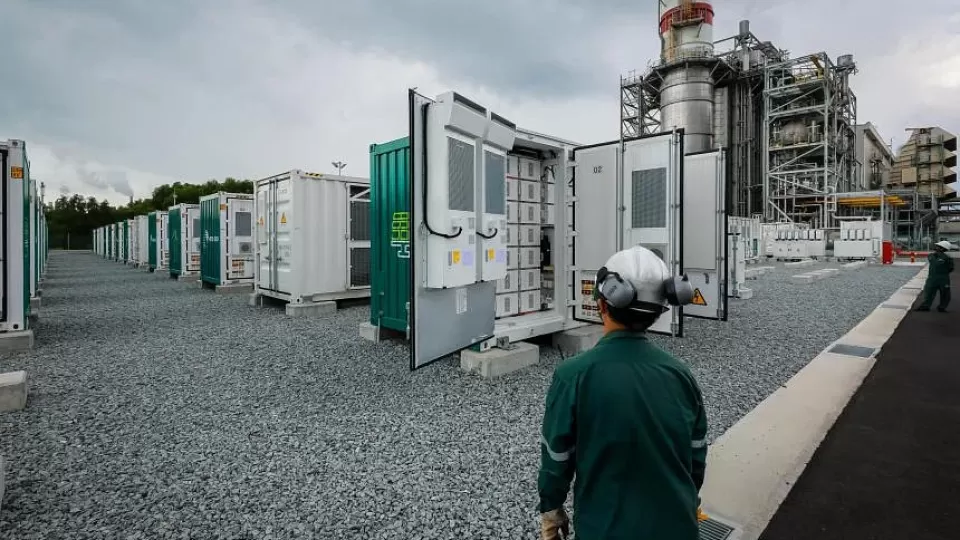February 3, 2023
SINGAPORE – To ensure a continuous supply of solar energy, even on cloudy and rainy days, a new, large-scale battery storage system has been built on Jurong Island.
Made up of more than 800 large-scale battery units that can be individually moved and installed, the system stores excess solar energy generated in the day to be used at times of higher electricity demand.
The Sembcorp Energy Storage System spans 2ha of land in the Banyan and Sakra regions on Jurong Island, or the equivalent of four football fields, Sembcorp Industries said on Thursday.
Said by Sembcorp to be the largest in South-east Asia, it offers a solution to intermittent power generation, long a problem for countries as they shift towards renewable sources of energy.
The storage system helps to regulate electricity supply and demand more efficiently, enhancing the resilience of the electricity grid.
Sembcorp said that the energy storage system has a maximum storage capacity of 285 megawatt hour (MWh), and, in a single discharge, can meet the electricity needs of around 24,000 four-room HDB households for one day.

The system spans two hectares of land in the Banyan and Sakra region on Jurong Island. ST PHOTO: GAVIN FOO
Second Minister for Trade and Industry Tan See Leng, who officiated at the launch of the battery power system on Thursday, noted that when there is heavy cloud cover or rain, solar power efficiency drops significantly.
“So, with the energy storage systems, we can store excess power that is generated during the peak production periods for use at other times,” he said.
Mr Koh Chiap Khiong, Sembcorp Industries’ chief executive for Singapore and South-east Asia, who was also at the launch, said that more than 3,000MWh of energy has been discharged from the battery to the grid since the system began operating late last year.
The battery storage system can also provide reserves to the power grid, which can free up power generation plants to generate more electricity to meet demand when needed, said the company.
Energy Market Authority (EMA) chief executive Ngiam Shih Chun said that the large-scale energy storage system will complement Singapore’s efforts to maximise solar adoption, by storing and delivering energy despite the intermittent nature of solar power.
He also noted that the storage system marked Singapore’s ability to store at least 200MWh of electricity three years ahead of time.
EMA had previously set a target for the country to deploy at least 200MWh of energy storage, with the shift towards renewables, at some time past 2025.

Minister for Manpower and Second Minister for Trade and Industry Dr Tan See Leng (right), Sembcorp Industries CEO for Singapore & South-east Asia Koh Chiap Khiong (second right) with guests at the official opening of Sembcorp Energy Storage System. ST PHOTO: GAVIN FOO
Dr Tan noted that Sembcorp had successfully commissioned the facility in a short period of six months.
“I am heartened to note that Sembcorp has achieved this feat with more than 235,000 safe man-hours contributed by over 400 workers working on-site,” he said.
EMA’s director of industry development Jeanette Lim said that the energy storage system had to be completed by December last year in order to provide energy, reserves and regulation services to enhance Singapore’s grid resilience, to manage any protracted market and energy supply volatility.
Asked about plans to construct a larger energy storage system following Thursday’s launch, Ms Lim said that EMA will continue to assess the need for more energy storage systems to support greater use of solar power in Singapore and enhance Singapore’s grid resilience.



